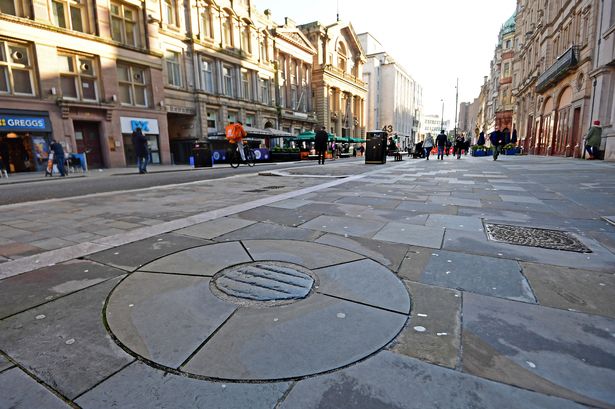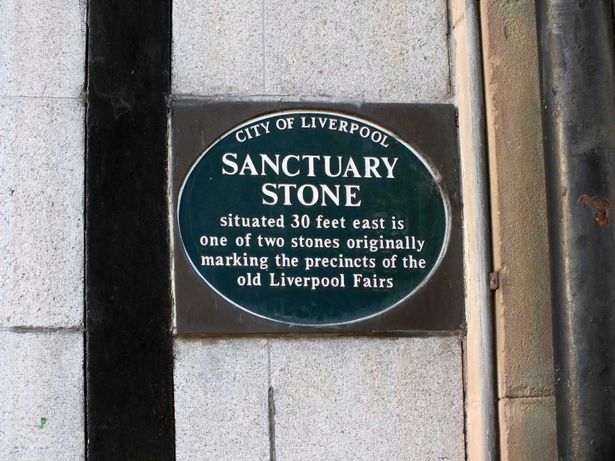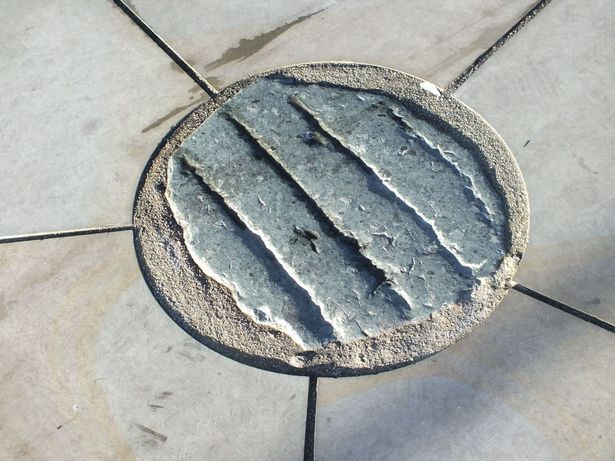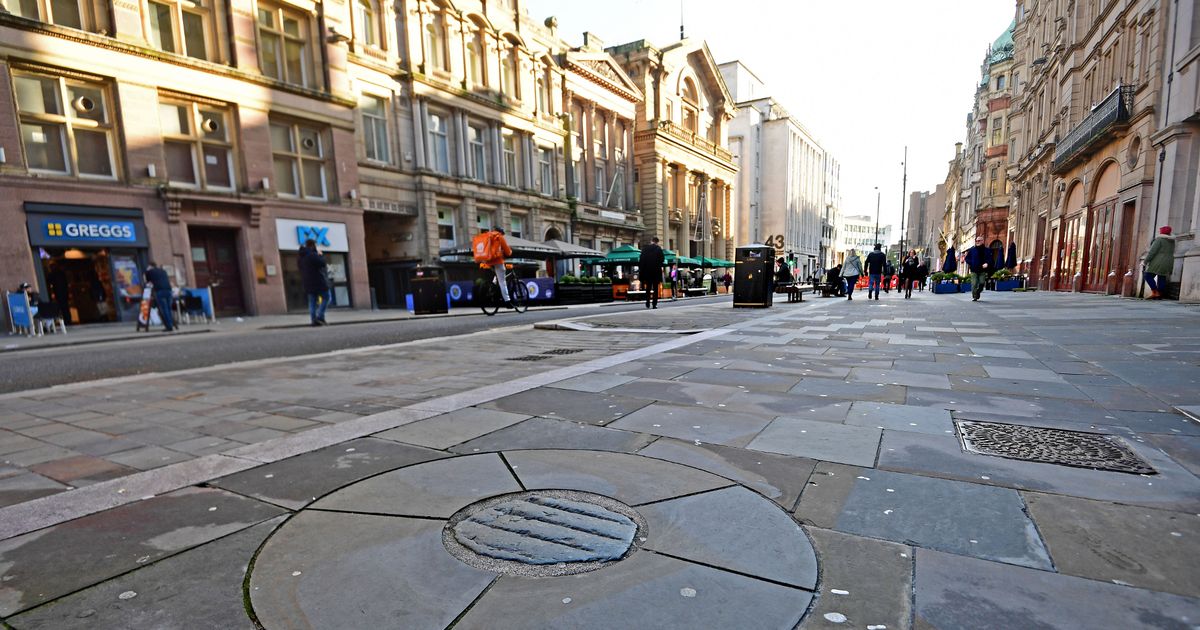Its origins aren’t clear and no one knows its exact age, but it is from the city’s medieval period The Sanctuary Stone on Castle Street is the last surface level trace of medieval Liverpool(Image: Colin Lane/Liverpool Echo)
The Sanctuary Stone on Castle Street is the last surface level trace of medieval Liverpool(Image: Colin Lane/Liverpool Echo)
A city centre street which thousands walk down every day holds an interesting relic on its pavement, one which many of the people stepping over it don’t know about, despite it being one of the oldest items in Liverpool.
The Sanctuary Stone on Castle Street is easy to miss. It’s a round black stone with four lines cut into it. Originally a few feet tall, it was one of four ‘Sanctuary Stones’ marking the boundary of Liverpool‘s medieval market, centred on the junction of Castle Street, Dale Street and High Street.
According to local legend, within the perimeter, thieves and debtors were immune from arrest.
The truth may have been a little different, with crimes dealt with on the spot by officers appointed by the Crown to police the fair, rather than by the time-consuming issuing of arrests and summons.
The Sanctuary Stone’s origins aren’t clear. No one knows for certain how old it is – or if the other stones still sit beneath the surface of different city streets – but the first record of Liverpool’s markets are from the 1290s.
 The plaque about the sanctuary stone on Castle Street
The plaque about the sanctuary stone on Castle Street
The stone is one of the only remaining artefacts from the city’s medieval period.
It features in Mike Keating’s book, ‘Secret Liverpool: An Unusual Guide’, which explores points of historical significance in Merseyside.
The book quotes senior archaeologist Mark Adams of National Museums Liverpool as saying: “The Sanctuary Stone is a unique relic of Liverpool’s medieval origins, being the only extant element of the medieval landscape to have survived to the present within the city’s historic core”.
 The sanctuary stone on Castle Street, Liverpool City Centre(Image: Liverpool Echo )
The sanctuary stone on Castle Street, Liverpool City Centre(Image: Liverpool Echo )
Medieval Liverpool was founded as a small fishing and farming village by King John in 1207, receiving a royal charter to establish it as a borough with a laid-out network of seven streets.
A castle was built in the 1230s, but the settlement remained insignificant, primarily serving as a military dispatch point to Ireland and fostering a small coastal trade.
The population never exceeded 1,000, with its core economic activities shifting from farming and fishing to crafts and simple goods. Today, almost no physical remains of the medieval town survive, except for the central street plan and the Sanctuary Stone.
So next time you’re walking down Castle Street, in between dodging the seagulls, keep one eye on the ground and see if you can spot this fascinating piece of history.
